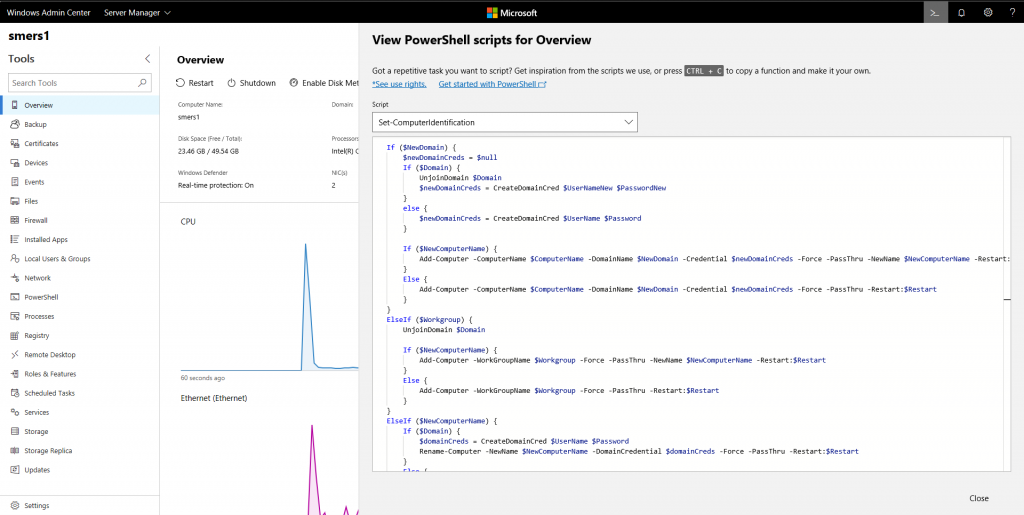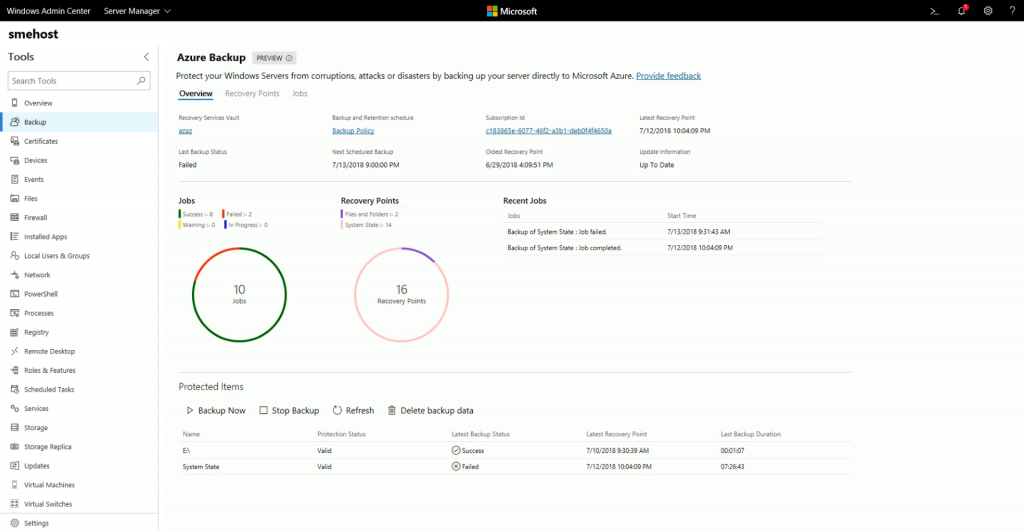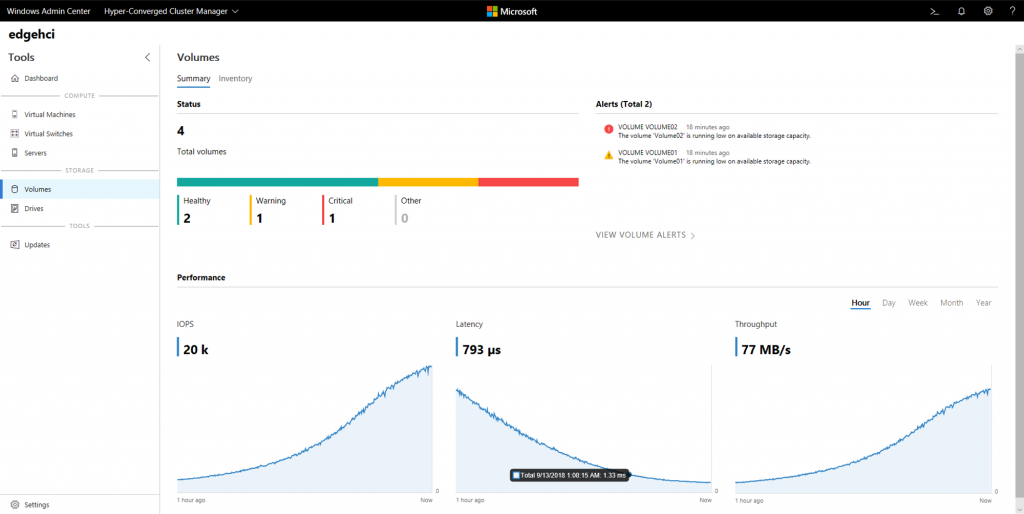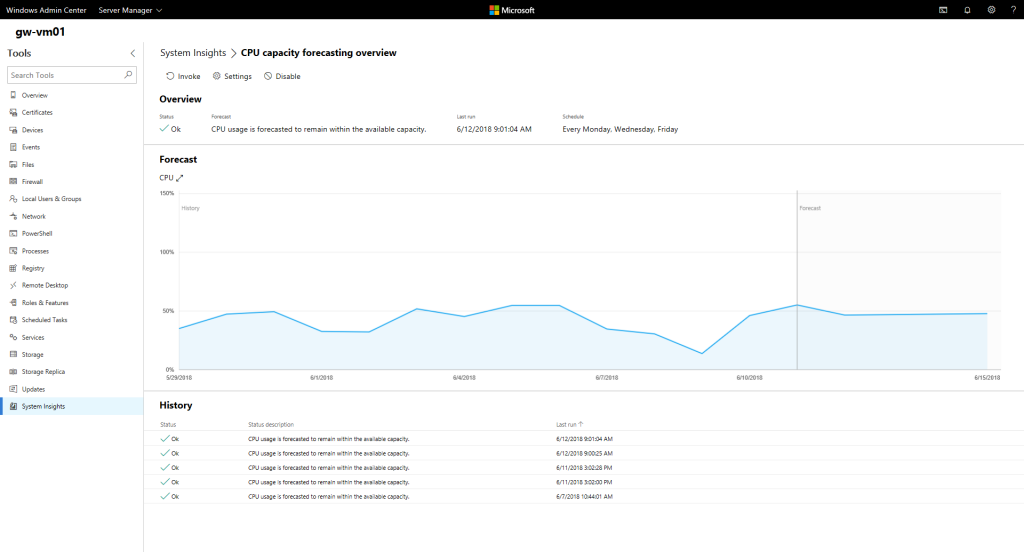Earlier this year, Microsoft announced the Windows Admin Center, a new feature that helps organize the activities of IT administrators managing Windows Server and Windows. Administrators were having to deal with tasks like Event Viewer, Server Manager, Device Manager, Disk Management, so forth, separately and now they can find all these tasks bundled together much more easily.
So far the Windows Admin Center, after originally being released in April as version 1804, has added an SDK preview, become the fastest growing Windows Server management toolset by June, and added three more regular previews since then: Windows Admin Center Preview versions 1806, 1807, and 1808.
On Thursday, Microsoft announced that Windows Admin Center 1809 and its SDK are both now generally available, meaning that Microsoft considers the Windows Admin Center ready for use in production environments by organizations. You can download the Windows Admin Center version 1809 from the Microsoft website. For those who want to know what’s new in this 1809 version, you can keep reading.
Core functionality
There are plenty of new features based on single server or single cluster troubleshooting, configuration and maintenance tasks thanks to user feedback. The new features include PowerShell scripts for actions in supported modules, enhanced scheduled tasks, enhanced file shares, the chance to View and remove currently installed Win32 applications, Hyper-V improvements, failover cluster improvements, editing and filtering improvements for tags, improve clarity in gateway settings, more organized notification system, and Windows Server 2008 R2 support as a connected target.
Hybrid
Should you choose, you can take advantage of better Azure services from your on-premises environment. Now you can find and use Azure services directly from the Windows Admin Center. This includes the Azure site recovery, Azure backups, as well as Azure update management features. You’ll also find better security now with Azure AD authentication, an Azure network adapter so you can connect on-premises Windows Server 2016/2019 instance to an Azure virtual network, and the chance to manage Azure IaaS VMs on Windows Server.
Hyper-converged infrastructure (HCI)
Hyper-converged infrastructure has always been a strong point to date, but with this update it gets even stronger again. All the features listed above apply to the HCI clusters too. The VMs list loads up to five times faster, and you get performance history included in the details page now. You also get more features with regards to Storage Space volumes, and new tools to manage and monitor your virtual networks.
Windows Server 2019 platform
Windows Admin Center adds some features and improves on existing ones, too. You can now migrate servers without having to reconfigure apps or users. You can also set up and configure disaster protection easier than before by using the replication of volumes directly from the Windows Admin Center. There’s also an option to manage native predictive analytics capabilities.
Extensibility and ecosystem
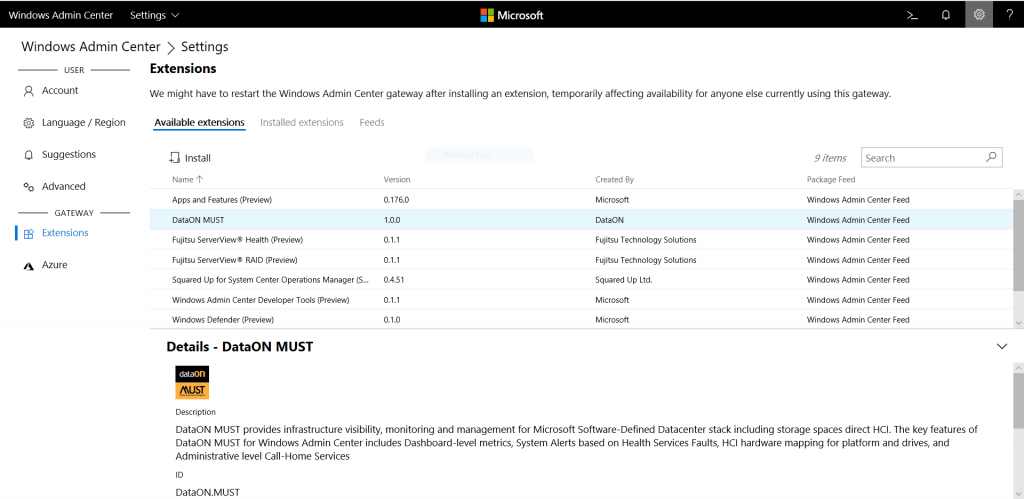 Windows Admin Center wouldn’t have grown to what it is today without the help from extensions that come from third-parties. This includes the extension manager that allows you to get notifications about new extensions and existing extension updates. SDK’s are now made available thanks to the extensions coming from many third parties.
Windows Admin Center wouldn’t have grown to what it is today without the help from extensions that come from third-parties. This includes the extension manager that allows you to get notifications about new extensions and existing extension updates. SDK’s are now made available thanks to the extensions coming from many third parties.
Ignite presence and sessions
If you are registered to attend Ignite next week, we invite you to come visit our Windows Admin Center station in the expo hall. Here’s a list of all the related breakout sessions which will cover various Windows Admin Center topics described above:
Main Windows Admin Center session
Windows Server sessions showcasing Windows Admin Center
- Windows Server 2019: What’s new and what’s next
- Windows Server 2019 deep dive
- The Perfect Match: Windows Admin Center & Server Core
Windows Server 2019 platform feature sessions using Windows Admin Center
- Windows Server 2019 System Insights: Simplified ML for the intelligent edge
- Establishing hybrid connectivity with Windows Server 2019 and Microsoft Azure
- Retire your old file servers with Storage Migration Service in Windows Server 2019
Hyper-converged Infrastructure sessions showcasing Windows Admin Center
-
From Hyper-V to hyper-converged infrastructure with Windows Admin Center
-
Be an IT hero with Storage Spaces Direct in Windows Server 2019
-
Modernize your datacenter with Software-Defined Networking (SDN) in Windows Server 2019
Related Tutorials
- Cortana and Alexa Integration is Live in United States
- Affordable Microsoft Surface Go Now ships at $399 Base Price
- Windows Update KB4078130 Removes Spectre Patch
- Windows 10 Insider Preview Build 17074 for PC Announced
- Windows 10 Insider Preview Fast/Skip Build 17046 for PC Announced
- Windows 10 Insider Preview Build 17004 for PC Announced
- Windows 10 Insider Preview Build 16299 for PC Announced
- Windows Server Insider Preview Build 16267 Announced
